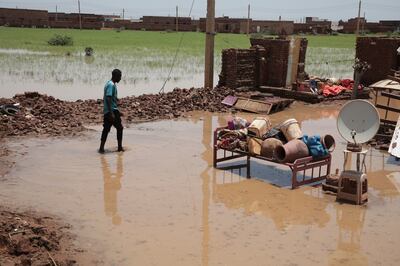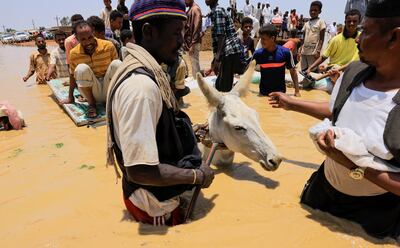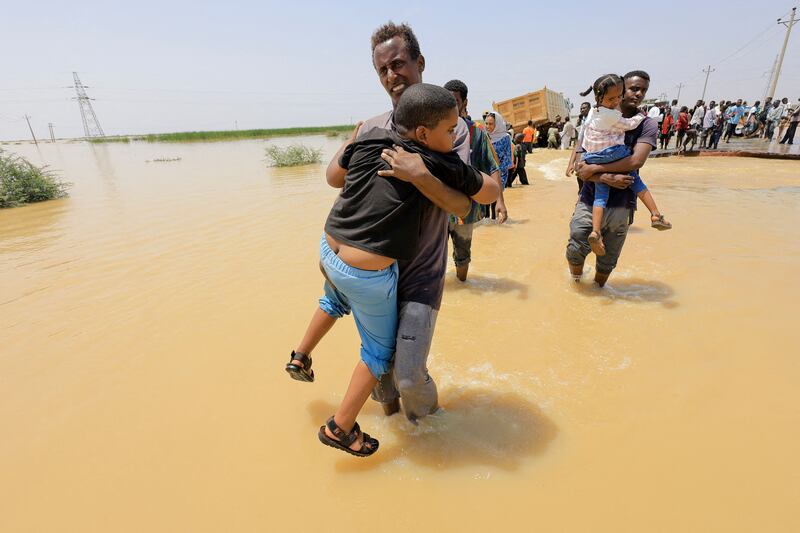Flooding across large parts of Sudan has wiped out entire rural areas and laid to waste large swathes of farmland at a time when the country is facing the grim prospect of mass hunger.
The August and September floods compounded the woes of a country already crippled by a political crisis, saddled with a battered economy and struggling with frequent collapses of security in its western and southern regions.
“We had not seen so much water before. Never,” said Fayrouz Abdul Razeq, recounting last month’s destructive flooding in her native White Nile state in Sudan’s southern region.
“Those who survived were so scared, they just got up and left their homes.”
The floods have fuelled opposition to the country’s military rulers, with many in the opposition accusing them of an inefficient and inadequate response to the disaster.
Others blamed the less-than-hoped-for emergency foreign aid on the international isolation the country has faced after the generals seized power last October.
The coup also derailed the country’s democratic transition following the removal in 2019 of long-time dictator Omar Al Bashir.
In response, the West has suspended billions of dollars worth of economic aid and debt forgiveness to Sudan. Repeated pleas by the generals for the resumption of aid have fallen on deaf ears.

Caused by unusually heavy rainfall and the overflowing of the Blue and White Niles, the floods caused billions of dollars worth of damage that could not have come at a worse time for the impoverished nation of 44 million.
The latest government figures show that the flooding killed 146 people, injured 122 and completely destroyed 63,111 homes. Another 88,266 homes were damaged. The main cause of death is drowning, which claimed 84 lives, followed by 55 deaths caused by collapsing roofs.
A total of 80,000 families are in need of humanitarian assistance, according to the Sudanese Red Crescent.
Police Brig Gen Abdul Jalil Abdul Raheem, the spokesman for the Civil Defence Council, told The National that more than 97,500 hectares of farmland were inundated during the peak of the flooding in September.
The loss of crops follows an assessment by the International Committee of the Red Cross that there has been a 187 per cent increase in the price of basic food items over the past year in conflict-affected areas.
This is a reference to the western Darfur and the southern Blue Nile regions where ethnic and tribal unrest has claimed hundreds of lives in recent months and displaced tens of thousands.
Moreover, Sudan has for months been plagued by three-digit inflation that is fuelled in part by the depreciation of the Sudanese pound and the continuing political deadlock since the October 25 military coup.

The lack of food in flood-struck areas has been made worse by contaminated water and the spread of waterborne diseases such as cholera.
“There is no food and relief agencies give us very little to eat,” said Ms Abdul Razek, a mother of four in the White Nile state.
“People are scared of becoming sick if they drink the water. It’s a big risk to drink it. Some of us went without water for two days until we found clean water to drink.”
Another resident of the state, Ali Al Nour Rahmah, said his village was struck by a new wave of flooding as recently as last week.
“The latest flooding took care of the little left unscathed by what happened last month,” he said. “I know of 18 villages close to mine where the entire crop has been wiped out, and another eight villages totally underwater now. We are totally isolated from the rest of the region.
“Children are hungry and mosquitoes are keeping us up at night.”







